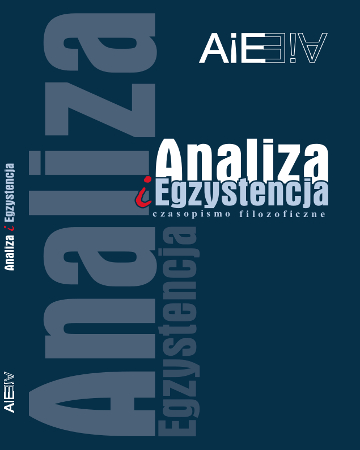
ISSN: 1734-9923
eISSN: 2300-7621
OAI
DOI: 10.18276/aie.2022.58-01





Issue archive /
58 (2022)
Mundus imaginalis. On some liminal adventures of the imagination
| Authors: |
Marta
Ples-Bęben

Uniwersytet Śląski |
| Keywords: | philosophy of imagination Islamic philosophy mundus imaginalis Henri Corbin Jean-Jacques Wunenburger |
| Data publikacji całości: | 2022 |
| Page range: | 11 (5-15) |
| Klasyfikacja JEL: | I30 I31 |
Abstract
The aim of the article is to analyze the category of mundus imaginalis formulated by Henry Corbin on the basis of Islamic philosophy (alam al-mithal). Corbin was inspired by Islamic mystics who recognized the existence of imaginary sphere, mediating between the sensual world and the intelligible world. For Corbin, who was also has influenced by CG. Jung and A. Koyré, mundus imaginalis becomes a useful tool for the analysis of imagination (understood as active cognitive power), but also of modern human condition. A counterpoint expanding the reflection on the mundus imaginalis is the research of Jean-Jacques Wunenburger, who – using Corbin’s analyzes – emphasizes the multi-level and structural nature of both: the power of the imagination and its products. In these interpretations, the following questions seem to be crucial: What does the category of mundus imaginalis contribute to the understanding of the essence of imagination and of the human world of imaginations? Which approach to the imagination is associated with the recognition of this category? I try to answer these questions in the article.
Download file
Article file
Bibliography
| 1. | Corbin, H. (1993). History of Islamic Philosophy. Transl. by L. Sherrard with the assistance of P. Sherrard. London–New York 1993: Kegan Paul International in association with Islamic Publications Ltd. |
| 2. | Corbin, H. (1964). Mundus Imaginalis or the Imaginary and the Imaginal. Retrieved from: https://www.amiscorbin.com/bibliographie/mundus-imaginalis-or-the-imaginary-and-the-imaginal/ (accessed 19. 10. 2021). |
| 3. | Jung, CG. (1968). Psychology and alchemy. Transl. by R.F.C. Hull. New York: Routledge & Kegan Paul Ltd. |
| 4. | Jung, CG. (2009). The Red Book. Liber novus. Ed. S. Shamdasani. Transl. by M. Kyburz, J. Peck, S. Shamdasani. New York: W. W. Norton & Company. |
| 5. | Miri, SI. (2013). Henry Corbin and the Resolution of Modern Problems by Recourse to the Concept of the Imaginal Realm. Al-Mustafa, 2 (3), 117–142. |
| 6. | Piątak, Ł. (2012). Ontologia i topografia Mundus Imaginalis u Szihab ad-Dina as-Suhrawardiego oraz Muhi ad-Dina Ibn Arabiego. Przegląd Orientalistyczny, 1–2, 22–33. |
| 7. | Proulx, D. (2019) Henry Corbin et imaginatio vera. In: R. Barontini, J. Lamy (eds.), L’histoire du concept d’imagination en France (de 1918 à nos jours) (pp. 187–195). Paris: Classiques Garnier. |
| 8. | Turner, V. (1969). The ritual process structure and anti-structure. New York: Routledge. |
| 9. | Wunenburger, JJ. (2010). Dwoisty język: antynomia i ambiwalencja. Transl. from French by M. Cieśla-Korytowska. In: Persefona, czyli dwie strony rzeczywistości. M. Cieśla-Korytowska, M. Sokalska (eds). Kraków: Wydawnictwo Uniwersytetu Jagiellońskiego. |
| 10. | Wunenburger, JJ. (2002). La vie des images. Grenoble: Presses Universitaires de Grenoble. |
| 11. | Wunenburger, JJ. (1997). Philosophie des images. Paris: Presses Universitaires de France. |